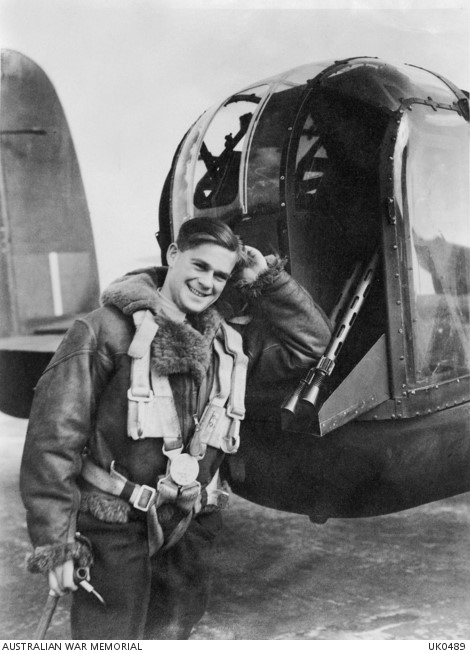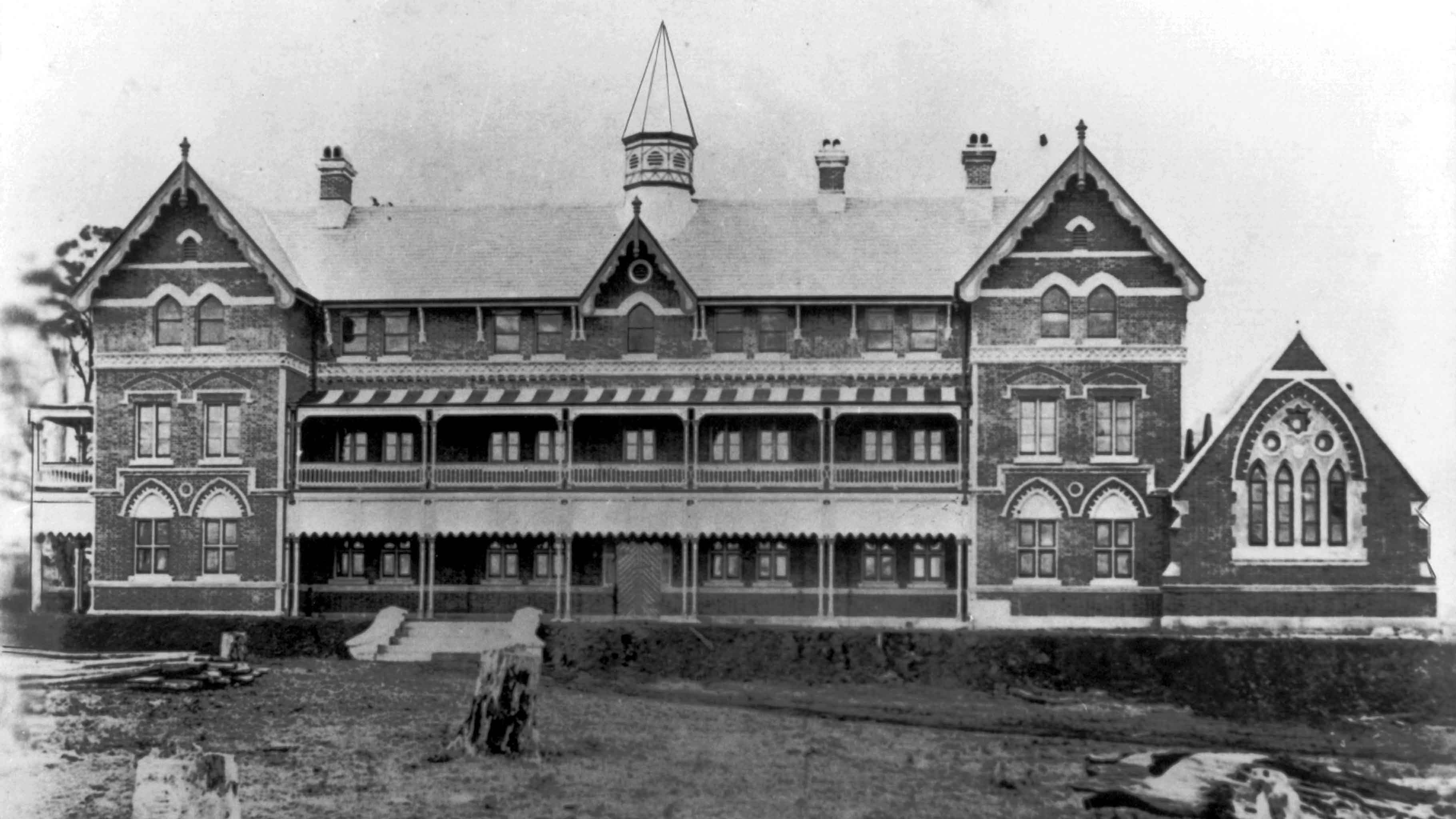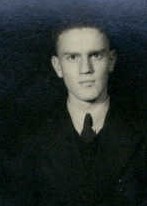Flight Sergeant Neville Taylor, the son of Ernest Albert Taylor and Edith Blanche Taylor (nee Siggers), was born at Toowoomba in Queensland on 5th April 1924. He was educated at the East State School during the years 1935 until 1936 where he passed the State Scholarship Examination. He then attended the Toowoomba Grammar School and passed the University of Queensland Junior Public Examination in 1939. After leaving school he was employed as a Clerk with the New Zealand Insurance Company in Toowoomba. He applied for aircrew training in the Royal Australian Air Force on 7th April 1942.
Flight Sergeant Neville Taylor was enrolled in the Reserve of the Royal Australian Air Force on 29th April 1942 after swearing an Oath of Affirmation. He was issued Reserve Badge No. 5735. At the age of 18 years and 1 month he was enlisted into the Citizen Air Force of the R.A.A.F. at No. 3 Recruiting Centre in Brisbane on 21st May 1942 after giving an undertaking that he would serve for the duration of the war and an additional twelve months. He was allotted the service number of 425985. His physical description at the time of enlistment was that he was 6 feet 1 inches in height and weighed 145 pounds. He had a fair complexion, brown eyes and light brown hair. He stated that he was of the Church of England religion. He gave his next of kin as his father, Mr Ernest Albert Taylor, who was a Carrier & Agent residing at 54 Lindsay Street in Toowoomba.
Flight Sergeant Neville Taylor joined No. 3 Recruiting Depot on 21st May 1942. He joined No. 5 Service Flying Training School at Uranquinty in New South Wales on 12th June 1943. He joined No. 65 Squadron at on 17th September 1942. He rejoined No. 5 Service Flying Training School on 1st October 1942. He joined No. 3 Initial Training School at Kingaroy on 9th November 1942. He joined No. 5 Elementary Flying Training School at Narromine in New South Wales on 6th February 1943. He joined No. 1 Air Observer School at Cootamundra in New South Wales on 5th April 1943. He joined No. 1 Bombing & Gunnery School at Evans head in New South Wales on 23rd August 1943. He awarded the Air Gunner Qualification Badge and was promoted to the rank of Temporary Sergeant on 16th September 1943. He joined No. 1 Embarkation Depot at Ascot Vale in Victoria on 17th September 1943 and No. 2 Embarkation Depot at Bradfield Park in Sydney on 8th October 1943 to prepare for service overseas on attachment to the Royal Air Force.
Flight Sergeant Neville Taylor embarked from Sydney in New South Wales on 13th October 1943 and disembarked in the United Kingdom on 21st November 1943 where he joined No. 11 Personnel Despatch and Reception Depot at Bournemouth later that day. He joined No. 17 Operational Training Unit at Royal Air Force Station Silverstone on 28th December 1943 where training was conducted to prepare aircrew for night bombing using Vickers Wellington aircraft. He joined No. 51 Base at Royal Air Force Station Swinderby in Lincolnshire where he received training with No. 1660 Heavy Conversion Unit. He would have received training on four engine bombers. He joined No. 463 Squadron Royal Australian Air Force at Royal Air Force Station Waddington in Lincolnshire for operational duties on 24th June 1944. The Squadron was prominent in the bombing offensive in connection with the Allied invasion of Europe as well as attacks on major targets in Germany.
Flight Sergeant Neville Taylor was a Rear Air Gunner and a member of the crew of a 463 Squadron Royal Australian Air Force Lancaster Bomber PD 25 that went missing on air operations whilst attacking a target at Konigsberg, Germany, on 29th August 1944. His father residing at 54 Lindsay Street, Toowoomba, was notified by the Air Board that he was missing presumably as a result of enemy action.

Australian War Memorial photograph UK0489
An Australian air gunner leaning against the rear turret of a Lancaster aircraft.
The Officer Commanding No. 463 Squadron wrote the following letter to Neville Taylors’ father on 31st August 1944:
Dear Mr Taylor, Prior to receiving this letter you will have received notification from the Air Board, Melbourne, that your son, Flight Sergeant Neville Alfred Taylor, is reported missing, and it is with deepest regret that I now write to confirm this sad news. On the night of 29th August 1944, the aircraft, in which your son was Air Gunner, took off to carry out an attack on Konigsberg. Unfortunately the aircraft failed to return from this operation, and no further news concerning the aircraft or any members of the crew has been received.
Flight Sergeant Taylor was a most efficient member of his crew, and his skill and courage have been an inspiration to us all. He was most popular among his colleagues and will be missed by his many friends. On behalf of all members of the Squadron I should like to convey to you our sincere sympathy in this time of great anxiety. Your son’s personal effects have been carefully collected and forwarded to the R.A.F. Central Depository, and in due course you will receive a communication concerning them from the Air Board, Melbourne. May I express my deep personal sympathy and hope that some news may yet be received of your son’s ultimate safety, Yours truly, Squadron Leader.
A fellow member of his squadron advised his father that he heard him on the radio over the target just before they went down to bomb and that the aircraft may have gone down into the Baltic Sea. After the war the Missing Research and Enquiry Service conducted thorough investigations in relation to the missing aircraft, however no trace was ever found of the aircraft and its crew. Neville Taylor’s name is therefore commemorated on the Runnymede Memorial to the Missing in the United Kingdom.
Flight Sergeant Neville Taylor, at the time of his death, was 20 years of age. His name is commemorated on Panel No. 109 at the Australian War Memorial in Canberra and locally on the Toowoomba Mothers’ Memorial, the Toowoomba Soldiers’ Memorial Hall Honour Board, the 2nd Toowoomba Scout Group Honour Board and the Toowoomba Grammar School WW2 Honour Board.




